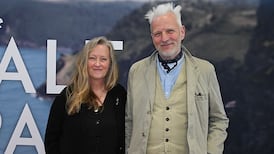Did you ever wonder how a nice painting can also reference a problematic dialectical juxtaposition? While some people think talking intelligently about art is a question of bandying long words in convoluted sentences, others take the opposite view. For Royal Hibernian Academy director Patrick Murphy, finding words for art is a way to “understand our emotional and visual reaction”. It can be helpful, he says, to start by thinking about art you don’t like.
Isn’t that a little negative?
“I got this advice early in my career. It’s easier to investigate why we don’t like something, as it’s less wrapped up in an emotional reaction. If you think about it like that, you can start to gather a vocabulary around it.”
That sounds ominous. So do we need to use millions of syllables?
READ MORE
No, thank goodness, but there are two schools of thought. “We do have art writing that revolves around critical theories,” says Murphy. “It’s a technical language, developed post-war, and then in the 1970s. It was really more applicable to literature departments in universities, but there was a spill into art schools.”
That’s all very well, but what do I do if I’m at an exhibition and someone is making me feel stupid?
Surprisingly, for all of us who think that if a work of art has made it into a gallery, it must be really good, Murphy disagrees. “Look, art shouldn’t be hard. If you feel stupid in front of art, there may be something wrong with the art. Or,” he continues, “maybe something was wrong with the person who made the statement. They may be just bad communicators.”
What does a good communicator sound like?
“Art should be generous. It should be communicative, and there are people who write more openly, and more generously about art. They tend to be more journalistic than academic.” John Berger’s Ways of Seeing, published in 1972, is still a really good read on all things arty. “He writes beautifully, and that’s the most important thing. He’s actually a good writer. He writes personally about art, and he asks simple questions that can lead to great complexity, but he can handle that within his style of writing.”
So much for writing, but I’m still in the gallery feeling stupid.
“No one wants to be embarrassed, and no one should be. If someone says something you find incomprehensible it’s okay to ask them what they mean.” That makes sense. If you go horse-racing, you wouldn’t mind asking people to explain the finer points of hocks and form. “Exactly, but for some reason we can feel more insecure around art,” says Murphy. This could be because of those emotions we mentioned. There’s nothing like a confused or heightened emotion to throw you off your stride – which is, of course, one of the wonderful things about art.
Small words good…
“Art is changing. There is a lot more art around, and lots of different types. So again, you may find it’s simply not your type of art.” Murphy recommends Peter Schjeldahl’s book, Hot, Cold, Heavy, Light. “Those are a really good four words to approach any of our senses about art. Is it light? Is it cool? Is it heavy?” If you’re still stuck for something to say to an artist about their work, try this one for size: It’s very dark. I’ve never met an artist who didn’t like to think their work might have a darkness about it.
Conor Horgan’s Post State is at the Royal Hibernian Academy until November 13th, rhagallery.ie














